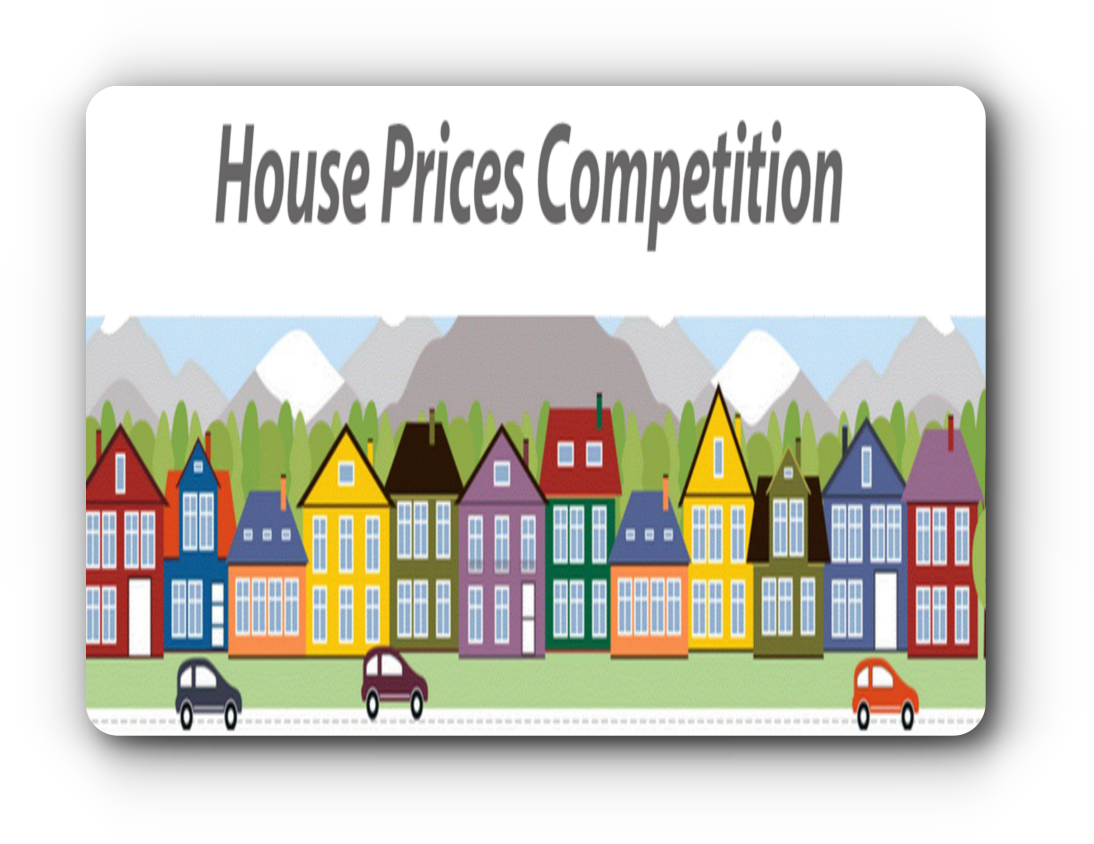House Price Prediction
🏠 House Price Prediction in Ames, Iowa
Predicting real estate prices using advanced regression techniques
“Accurate home valuation — powered by data.”
📎 Full Analysis:
👉 View Jupyter Notebook on GitHub
📎 Competition Source:
👉 Kaggle: House Prices - Advanced Regression Techniques

📌 One-Line Summary
This project predicts house prices in Ames, Iowa using 81 property features such as area, location, condition, and building type.
It applies data preprocessing, feature engineering, and regression modeling to estimate realistic sale prices.
1️⃣ How It Was Built
1. Data Collection
- Train Data: 1,460 records, 81 features
- Test Data: 1,459 records, 80 features (SalePrice excluded)
- Total: 2,919 property listings
- Data from Kaggle competition dataset
2. Data Preparation
- Checked missing values (e.g.,
LotFrontage,MasVnrArea) - Filled missing values using median or mode depending on the feature type
- Removed outliers (e.g., extreme
GrLivAreavalues) - Applied log transformation to
SalePriceto normalize skewed distribution - Converted categorical features into numerical form using one-hot encoding
3. Exploratory Data Analysis (EDA)
- Numerical features: Plotted scatter graphs with
SalePriceto detect trends
→ FoundGrLivAreahas strong linear correlation with price - Categorical features: Compared median prices across categories (e.g., neighborhood)
- Observed that larger living area and better overall quality strongly increase house price
4. Feature Engineering
- Created new features such as:
TotalSF= Total square footage (basement + 1st floor + 2nd floor)Age= Years since construction
- Dropped low-impact or highly correlated redundant features
5. Model Training (OLS Regression)
- Used Ordinary Least Squares (OLS) regression to predict prices
- Checked multicollinearity using Variance Inflation Factor (VIF)
- Selected final set of features after removing high-VIF variables
📊 Evaluation Metric:
- Root Mean Squared Error (RMSE) used for performance check
- Final RMSE (log-transformed target): ~0.12 on validation set
6. Results
| Feature | Impact on Price |
|---|---|
OverallQual |
Very High |
GrLivArea |
High |
GarageCars |
High |
TotalSF |
High |
Neighborhood |
Moderate |
Example Prediction:
- House: 2-story, built in 2005, 2,000 sqft, good neighborhood
- Predicted Price: ~$197,500
2️⃣ Real-World Use
- The OLS model can be used by real estate agencies to estimate property prices
- Buyers & sellers can check if a listing is fairly priced
- Government agencies can use it for property tax assessment
🛠 Technologies Used
| Step | Technology |
|---|---|
| Data Storage | CSV (Kaggle Dataset) |
| Model Dev | Python, Pandas, NumPy, statsmodels |
| Visualization | Matplotlib, Seaborn |
| Environment | Jupyter Notebook |
💡 Key Learnings
- Log-transforming skewed price data improves model performance
- Removing multicollinear features increases stability of regression coefficients
- Even simple linear models can perform well with good feature engineering
🔗 GitHub Repository
All articles on this blog are licensed under CC BY-NC-SA 4.0 unless otherwise stated.
